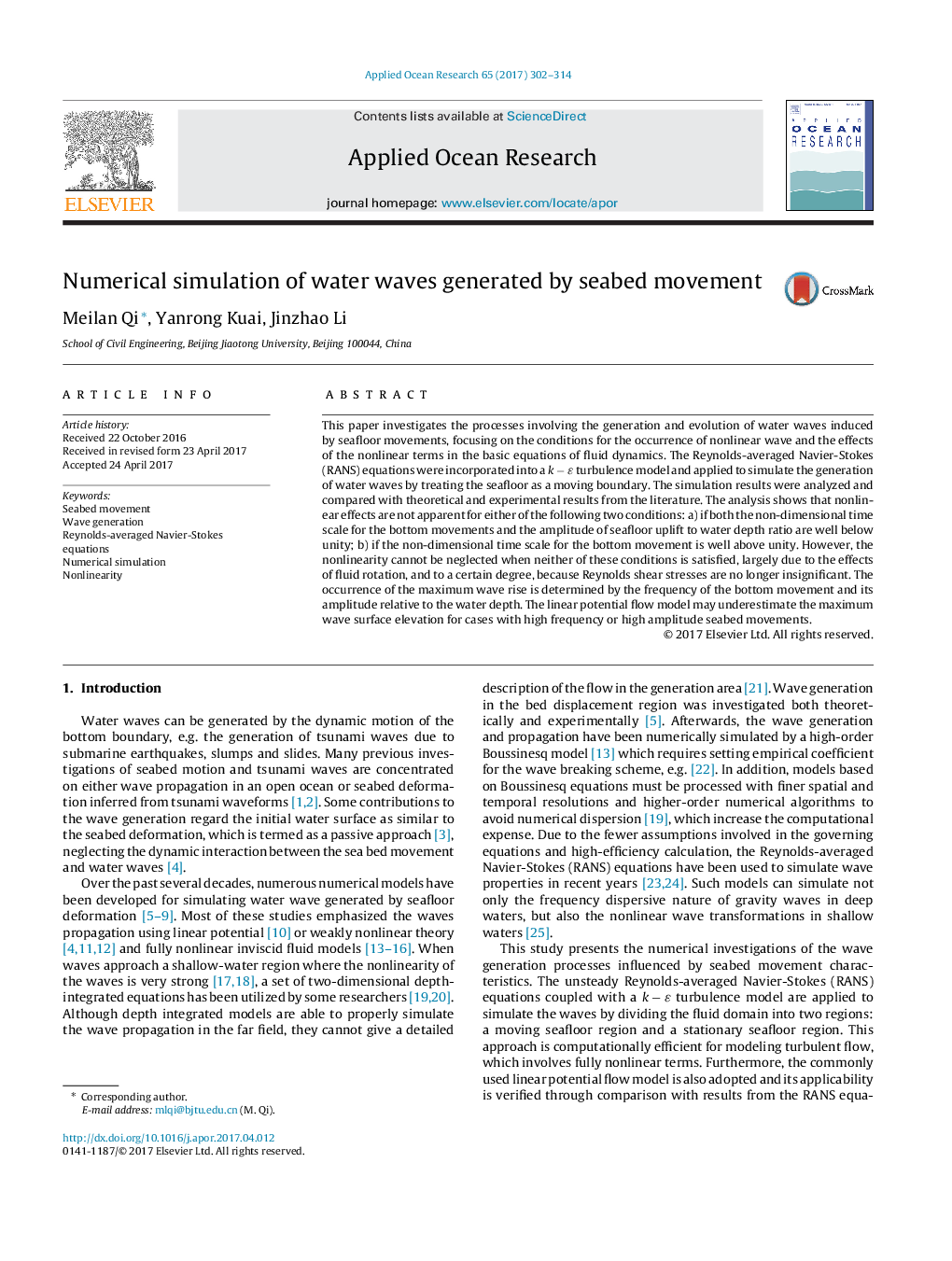| Article ID | Journal | Published Year | Pages | File Type |
|---|---|---|---|---|
| 5473319 | Applied Ocean Research | 2017 | 13 Pages |
Abstract
This paper investigates the processes involving the generation and evolution of water waves induced by seafloor movements, focusing on the conditions for the occurrence of nonlinear wave and the effects of the nonlinear terms in the basic equations of fluid dynamics. The Reynolds-averaged Navier-Stokes (RANS) equations were incorporated into a kâε turbulence model and applied to simulate the generation of water waves by treating the seafloor as a moving boundary. The simulation results were analyzed and compared with theoretical and experimental results from the literature. The analysis shows that nonlinear effects are not apparent for either of the following two conditions: a) if both the non-dimensional time scale for the bottom movements and the amplitude of seafloor uplift to water depth ratio are well below unity; b) if the non-dimensional time scale for the bottom movement is well above unity. However, the nonlinearity cannot be neglected when neither of these conditions is satisfied, largely due to the effects of fluid rotation, and to a certain degree, because Reynolds shear stresses are no longer insignificant. The occurrence of the maximum wave rise is determined by the frequency of the bottom movement and its amplitude relative to the water depth. The linear potential flow model may underestimate the maximum wave surface elevation for cases with high frequency or high amplitude seabed movements.
Related Topics
Physical Sciences and Engineering
Engineering
Ocean Engineering
Authors
Meilan Qi, Yanrong Kuai, Jinzhao Li,
